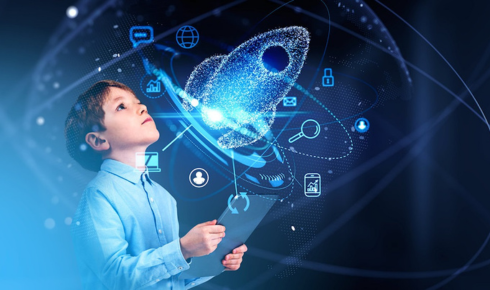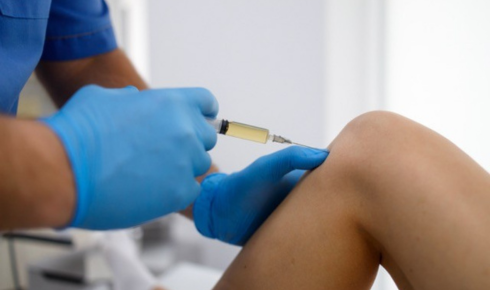Circumcision is a practice steeped in tradition and cultural significance for many communities around the world. However, one question often arises among those who undergo circumcision or are considering it: where exactly is the circumcision scar located? Let’s delve into this topic to shed light on this common query.
1. Understanding Circumcision:
Circumcision is the surgical removal of the foreskin, the skin covering the tip of the penis. It is often performed for religious, cultural, or medical reasons.
2. Types of Circumcision:
There are various methods of circumcision, including traditional circumcision, which involves the use of a scalpel, as well as newer techniques such as laser circumcision.
3. Healing Process:
After circumcision, the body undergoes a healing process. Understanding this process can provide insights into the location of the circumcision scar.
4. Location of the Scar:
The circumcision scar typically forms at the site where the foreskin was removed from the penis. This scar may vary in appearance and prominence depending on factors such as the circumcision method used and individual healing processes.
5. Appearance of the Scar:
In some individuals, the circumcision scar may be more noticeable, appearing as a distinct line encircling the shaft of the penis. In others, especially those who undergo circumcision as infants, the scar may be less prominent and more difficult to discern.
6. Variations in Scarring:
The appearance of the circumcision scar can vary based on factors such as the skill of the surgeon, the type of circumcision performed, and individual differences in healing.
7. Scar Tissue Formation:
During the healing process, scar tissue forms at the site of the circumcision. This tissue is typically lighter in color than the surrounding skin and may feel slightly different to the touch.
8. Long-Term Effects:
While the circumcision scar may be more noticeable in the weeks following the procedure, it tends to fade over time. In some cases, it may become barely perceptible, especially with proper wound care and as the skin matures.
9. Psychological Impact:
For some individuals, the presence of a circumcision scar may have psychological implications, affecting body image and self-esteem. It’s essential to address any concerns or insecurities related to the circumcision scar.
10. Cultural Perspectives:
In many cultures, circumcision is deeply rooted in tradition and may carry significant cultural significance. Understanding these cultural perspectives can provide context to discussions surrounding circumcision scars.
11. Medical Considerations:
While circumcision is generally considered safe, it’s essential to weigh the potential benefits and risks before undergoing the procedure. Consulting with a healthcare provider can provide valuable insights into the medical aspects of circumcision.
12. Surgical Complications:
As with any surgical procedure, there is a risk of complications associated with circumcision, including infection, excessive bleeding, and improper healing. Prompt medical attention is crucial if complications arise.
13. Alternative Perspectives:
In recent years, there has been growing debate surrounding the practice of circumcision, with some individuals advocating for alternative approaches or questioning its necessity.
14. Personal Choice:
Ultimately, the decision to undergo circumcision is a personal one, influenced by factors such as religious beliefs, cultural norms, and individual preferences.
15. Addressing Concerns:
If you have questions or concerns about circumcision or the resulting scar, don’t hesitate to speak with a healthcare provider or a qualified professional who can offer guidance and support.
16. Psychological Support:
For individuals grappling with psychological or emotional challenges related to circumcision scars, seeking support from mental health professionals or support groups can be beneficial.
17. Cultural Sensitivity:
It’s important to approach discussions about circumcision with cultural sensitivity and respect for diverse perspectives and beliefs.
18. Education and Awareness:
Raising awareness and fostering open dialogue about circumcision can help dispel myths, reduce stigma, and empower individuals to make informed decisions.
19. Respect for Autonomy:
Respecting individual autonomy and bodily integrity is paramount in discussions surrounding circumcision and other medical procedures.
20. Continuing Dialogue:
As societal attitudes and practices evolve, it’s essential to continue engaging in constructive dialogue about circumcision and its implications.
21. Advocating for Choice:
Advocating for individuals’ right to make informed choices about their bodies, including whether or not to undergo circumcision, is crucial for promoting autonomy and self-determination.
22. Medical Ethics:
Ethical considerations surrounding circumcision include issues of consent, bodily autonomy, and the best interests of the individual, particularly when the procedure is performed on infants or minors.
23. Global Perspectives:
Circumcision practices vary widely across cultures and regions, highlighting the importance of understanding diverse cultural contexts and perspectives.
24. Empowering Decision-Making:
Empowering individuals with knowledge and resources to make informed decisions about circumcision can help ensure that their choices align with their values and beliefs.
In conclusion, the circumcision scar typically forms at the site where the foreskin is removed from the penis, though its appearance may vary. Understanding the factors influencing the location and visibility of the circumcision scar is essential for promoting informed decision-making and fostering respectful dialogue about this sensitive topic.







